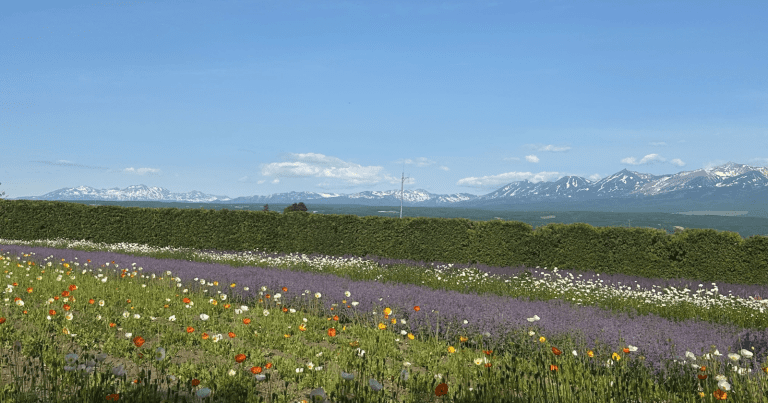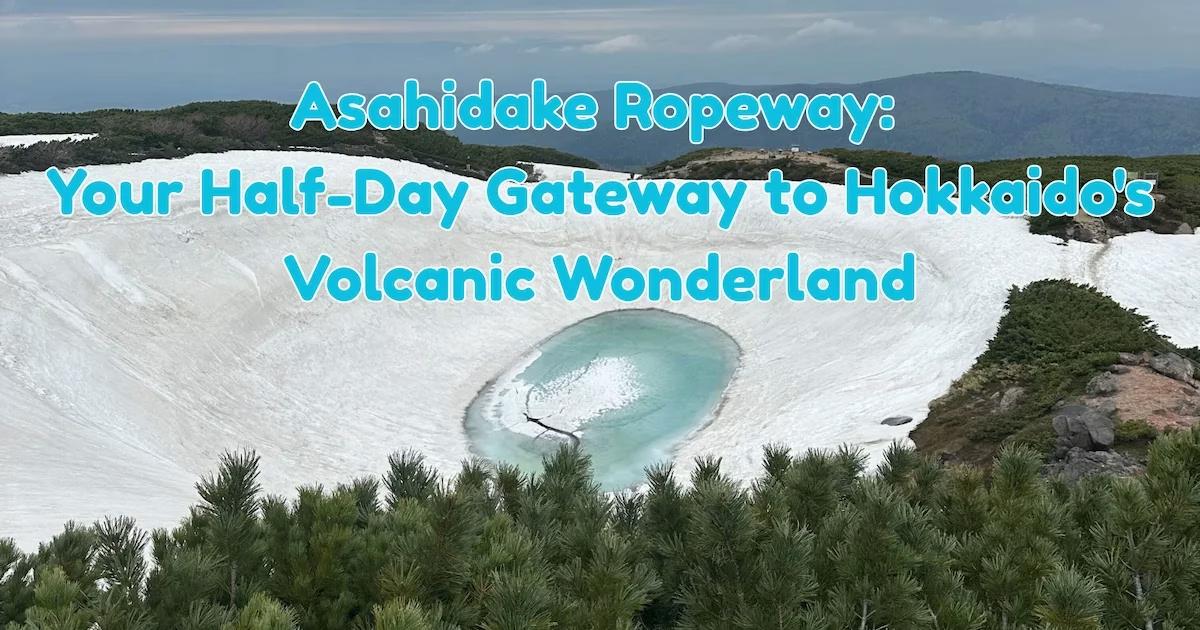
Do you ever dream of standing atop a majestic peak, surrounded by raw, untamed nature, but have only a few precious hours to spare? As a solo traveler who’s explored Asia far and wide, I know the struggle of wanting to pack in as much as possible without feeling rushed or overwhelmed.
That’s why I’m here to tell you that visiting Asahidake Ropeway for a half-day trip isn’t just possible—it’s one of the most rewarding, savvy travel hacks you can pull off in Hokkaido’s highest peak, Asahidake, part of the magnificent Daisetsuzan National Park, with insider knowledge that ensures a smooth, unforgettable adventure.
My journey to Asahidake was exactly this kind of strategic strike. Based in Furano during my Hokkaido road trip, I wanted a taste of the alpine without dedicating an entire day, especially with so much else to see. What I discovered was a practical, accessible way to witness incredible volcanic landscapes, stunning mountain vistas, and even encounter unexpected snow, all within a few hours.
Mastering Your Approach to Asahidake
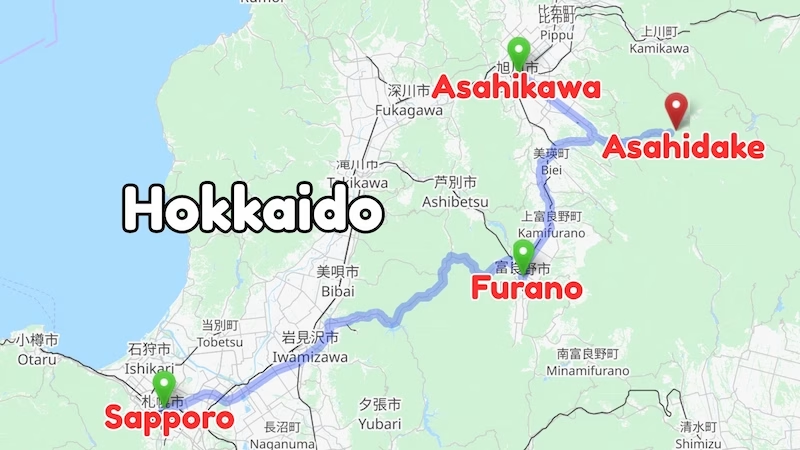
A successful half-day trip hinges on efficient planning, especially when dealing with mountain environments. Here’s how to get yourself to the base of Asahidake Ropeway and prepare for what awaits.
Getting to Asahidake Ropeway
Asahidake Ropeway is located within Daisetsuzan National Park, a vast wilderness. While it feels remote, it’s surprisingly accessible if you approach it smartly. Your primary options will be from Sapporo or Asahikawa.
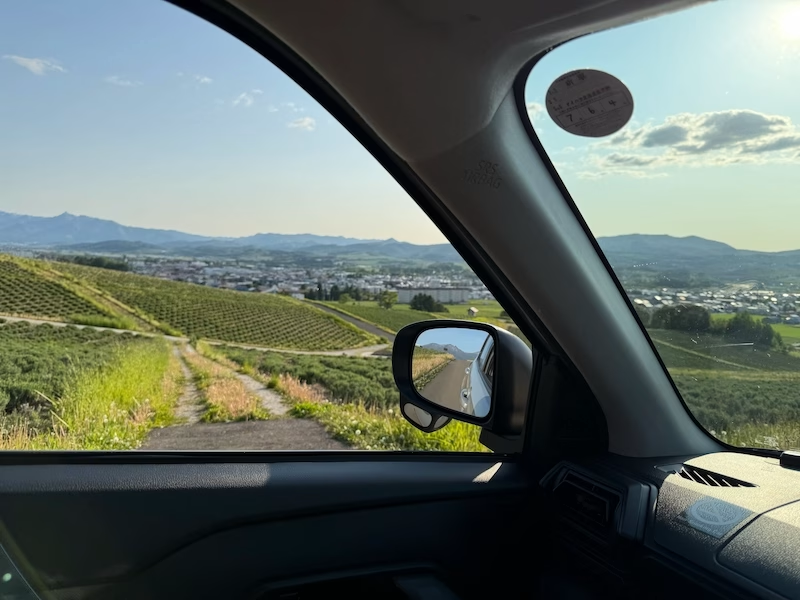
If you’re coming from Sapporo, the journey will take approximately 2 to 2.5 hours by car to reach the Asahidake Ropeway base station. Public transport is an option, but it’s less direct for a half-day trip. You’d typically take a JR train from Sapporo to Asahikawa (about 1.5 hours) and then switch to a bus towards Asahidake Onsen.
The bus journey from Asahikawa Station to Asahidake Ropeway takes roughly 1.5 hours. For a half-day visit, this public transport route significantly eats into your precious exploration time. The bus schedule can also be restrictive, so always check the latest timetable online before you go.
My base was Furano, which is considerably closer than Sapporo. From Furano, the drive to Asahidake Ropeway took me about 1.5 hours. This shorter drive was crucial for making it a successful half-day excursion. I had the flexibility to wake up, have a leisurely breakfast, drive, enjoy the mountain, and be back in Furano for a late lunch, still having the afternoon free for other activities.
This is precisely why renting a car in Hokkaido truly beat my expectations and is my top recommendation for independent travelers exploring the island. The freedom to explore at your own pace, especially for destinations off the main train lines like Asahidake, is invaluable. Public transportation can make a half-day trip to Asahidake feel rushed and constrained, whereas a car allows you to maximize your time on the mountain.
I once misjudged the time it would take to drive a mountain road in rural Japan, thinking it would be a straightforward commute. What I failed to account for were the winding roads, occasional local traffic, and the need to stop for gas in a sparsely populated area. That minor oversight almost derailed my morning plans. The takeaway? Even with a car, always pad your estimated travel time, especially in mountainous regions like Daisetsuzan, and ensure your vehicle is fueled up.
Conquering Asahidake’s Climate
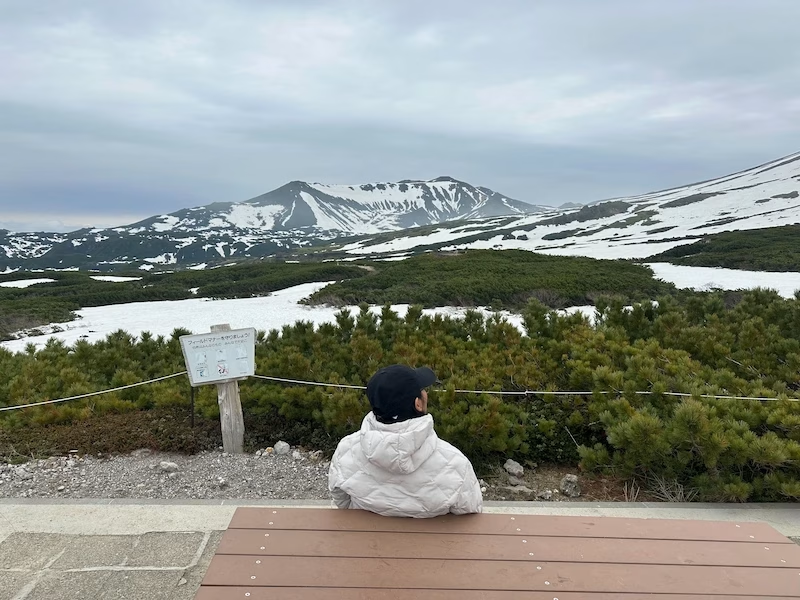
This is perhaps the single most critical piece of advice for a successful Asahidake visit. Hokkaido’s weather, particularly in its highest regions, is notoriously unpredictable and can change rapidly, even in summer. The summit of Asahidake is significantly colder than the base, and you absolutely must be dressed properly for the cold and changing weather up there. Many travelers, especially those visiting in June or July, expect warmth but are shocked by the alpine conditions.
When I visited in June, I distinctly remember feeling comfortable at the base, but as we ascended, the temperature dropped considerably, and there was still a substantial amount of snow at the summit station! I saw tourists shivering in light jackets and sneakers, clearly unprepared. Do not be that traveler. The explanation of “why” is simple: you’re ascending an active volcano to a high altitude (Sugatami Station is at 1,600m or 5,250 ft, the peak is 2,291m or 7,516 ft). The air is thinner, temperatures are lower, and clouds can roll in quickly, bringing wind, rain, or even snow, regardless of the season.
Here’s what I recommend you wear, even for a “summer” visit:
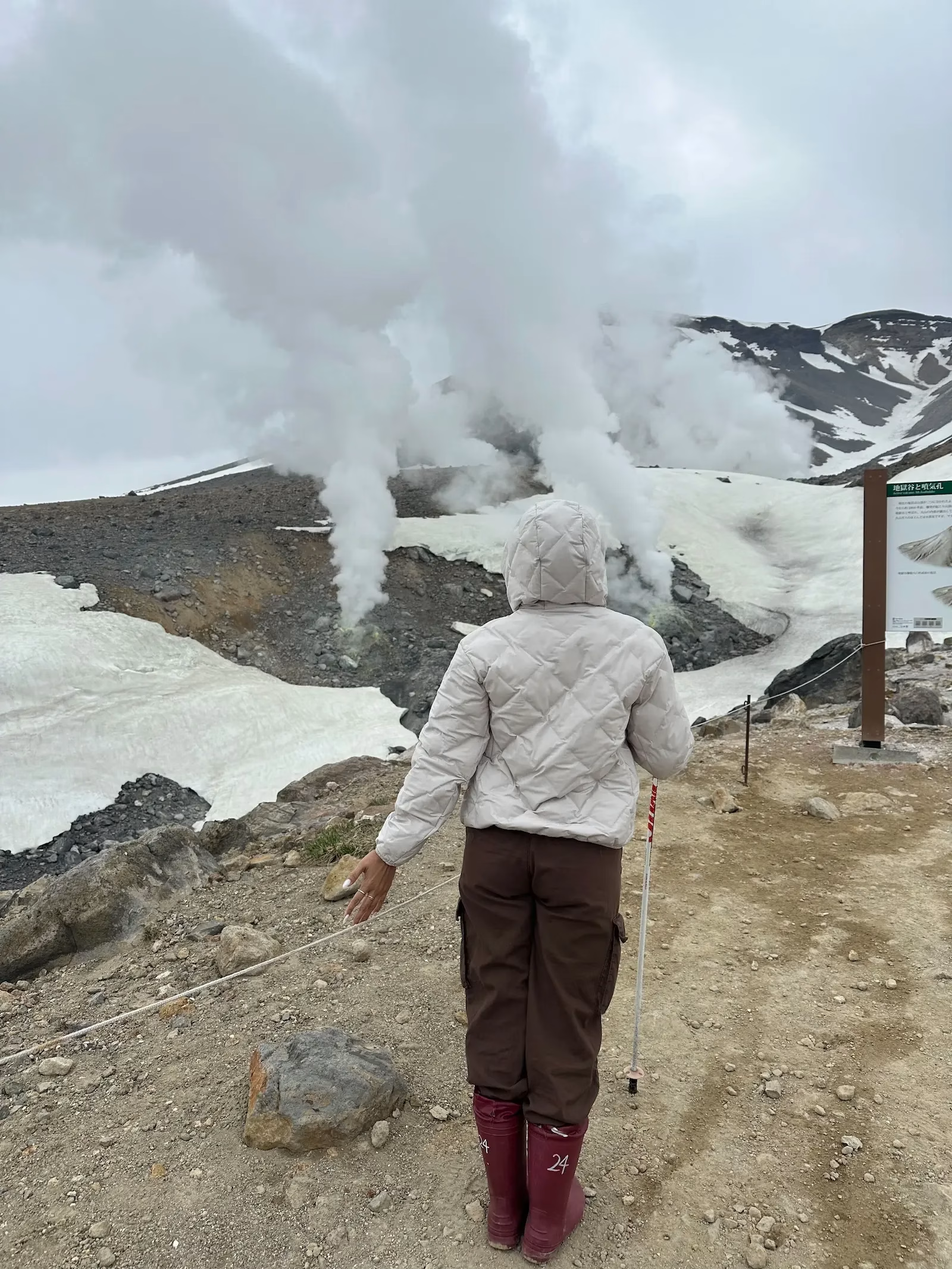
- Layers, Layers, Layers: Start with a moisture-wicking base layer, add an insulating mid-layer (fleece or light down jacket), and finish with a waterproof and windproof outer shell.
- Proper Footwear: Sturdy, waterproof hiking boots are ideal. Even for short walks around Sugatami, the terrain can be uneven, rocky, and, as I experienced, snowy and slushy.
- Headwear & Gloves: A warm hat and lightweight gloves are indispensable. Your body loses a lot of heat through your head and extremities.
- Essentials: Don’t forget sunglasses (snow glare can be intense), sunscreen, and a small backpack for water and snacks.
If you arrive and realize your footwear isn’t adequate, don’t panic. At Sugatami Station, the staff provides a short orientation upon arrival, and this is where I discovered they also offer boot rentals. It was a lifesaver for me, as my regular sneakers were no match for the lingering snow patches. It’s a small cost for a world of difference in comfort and safety, and a testament to the Japanese attention to visitor well-being.
The Ropeway Experience and Summit Navigation
With your transportation sorted and your gear on point, let’s talk about the actual experience of ascending Asahidake and what to do once you reach the top.
The Asahidake Ropeway
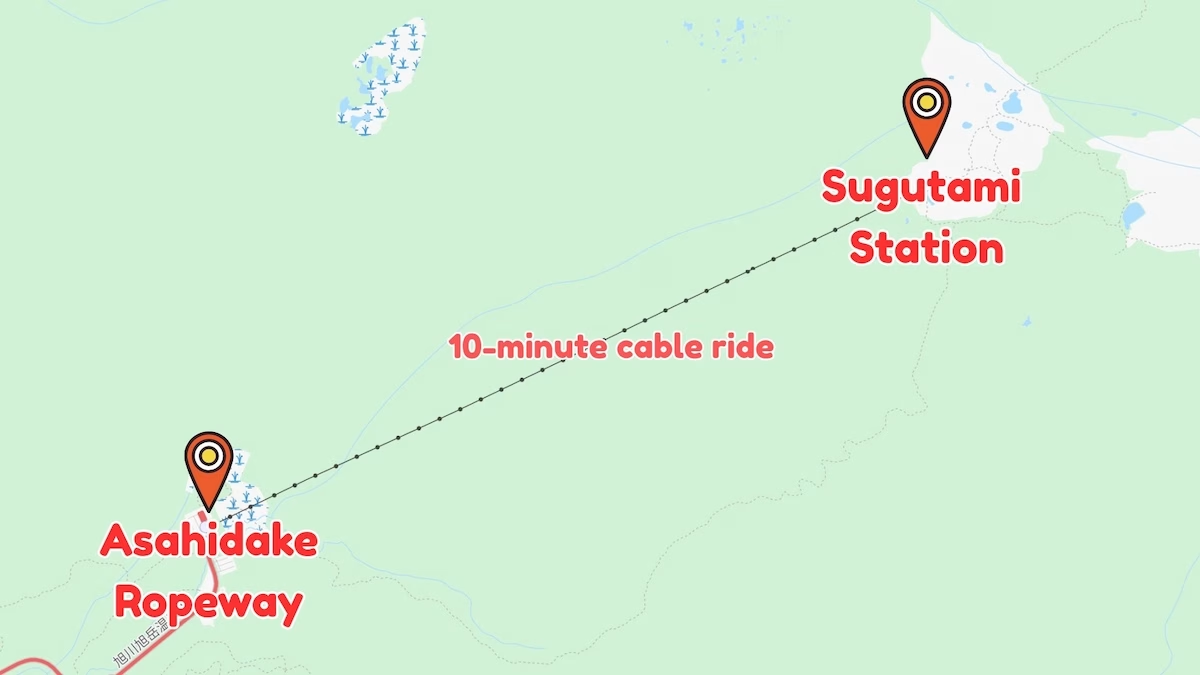
The journey itself is part of the adventure. The drive to the Asahidake Ropeway base station is scenic, winding through pristine forests before opening up to views of the mountain. There’s ample parking available, though it can get busy during peak season. Once at the base, you’ll purchase your tickets.
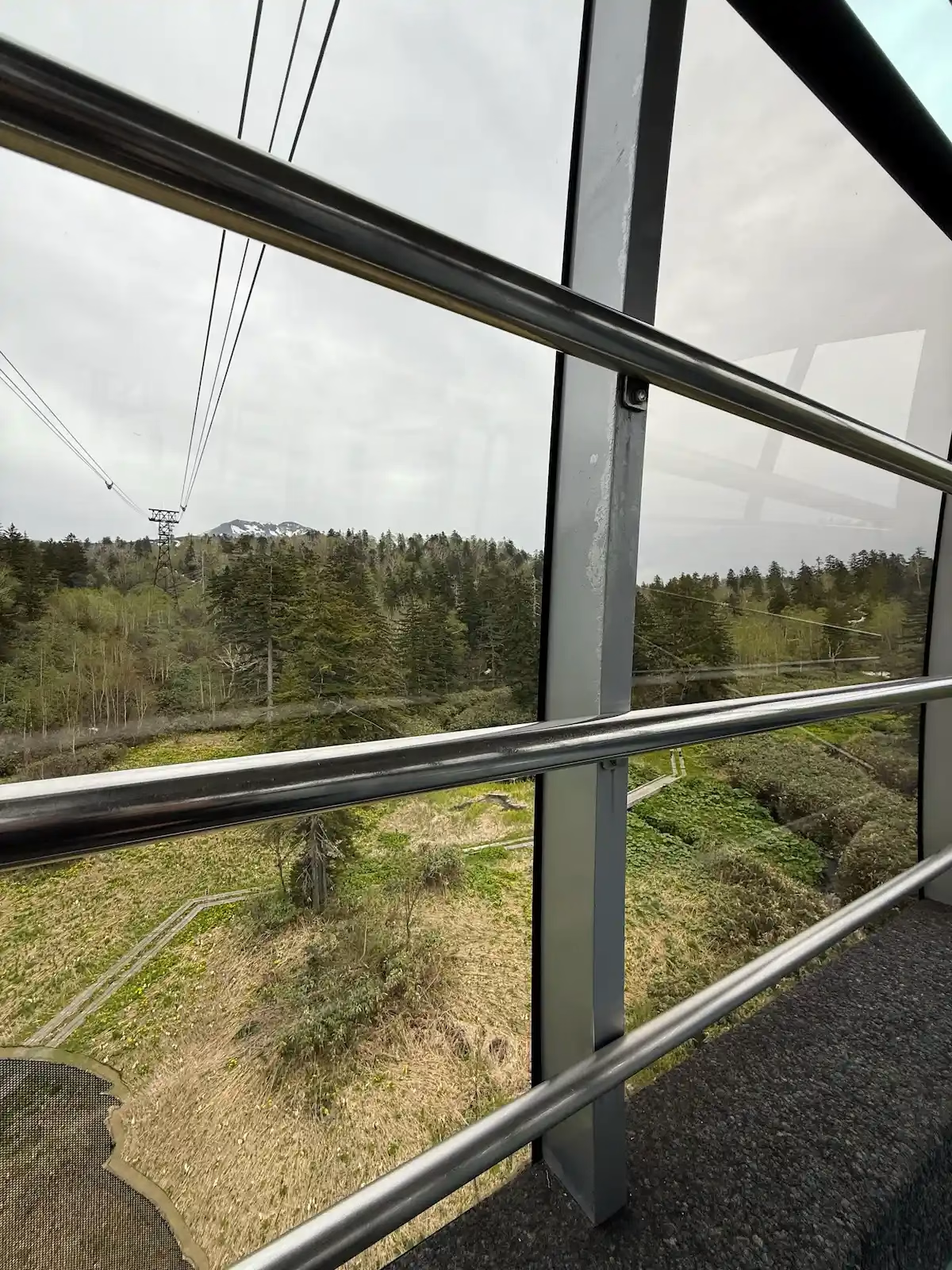
As of my last visit (always check their official website for the most current pricing), a round-trip ticket for the cable car costs around 3,200 JPY for adults. The trip up is a comfortable and efficient 10-minute ride, gliding silently over the trees, offering increasingly spectacular views of the surrounding Daisetsuzan National Park as you ascend. It’s an ideal way to gain significant elevation quickly, making that half-day trip truly viable.
The cable cars run frequently, typically every 15-20 minutes, so you won’t spend much time waiting. This efficiency is key for maximizing your time. The views from inside the cabin are already breathtaking, giving you a taste of the raw beauty that awaits.
At the Summit
Upon disembarking at Sugatami Station, you’ll immediately feel the crisp mountain air. This is the starting point for all hikes on Asahidake. As mentioned, the staff here provides a short orientation, offering crucial information about current trail conditions, weather updates, and safety warnings.
Pay close attention to this, especially if you plan to venture beyond the immediate observation decks. This is also where you can rent those much-needed boots if you didn’t bring your own suitable footwear.
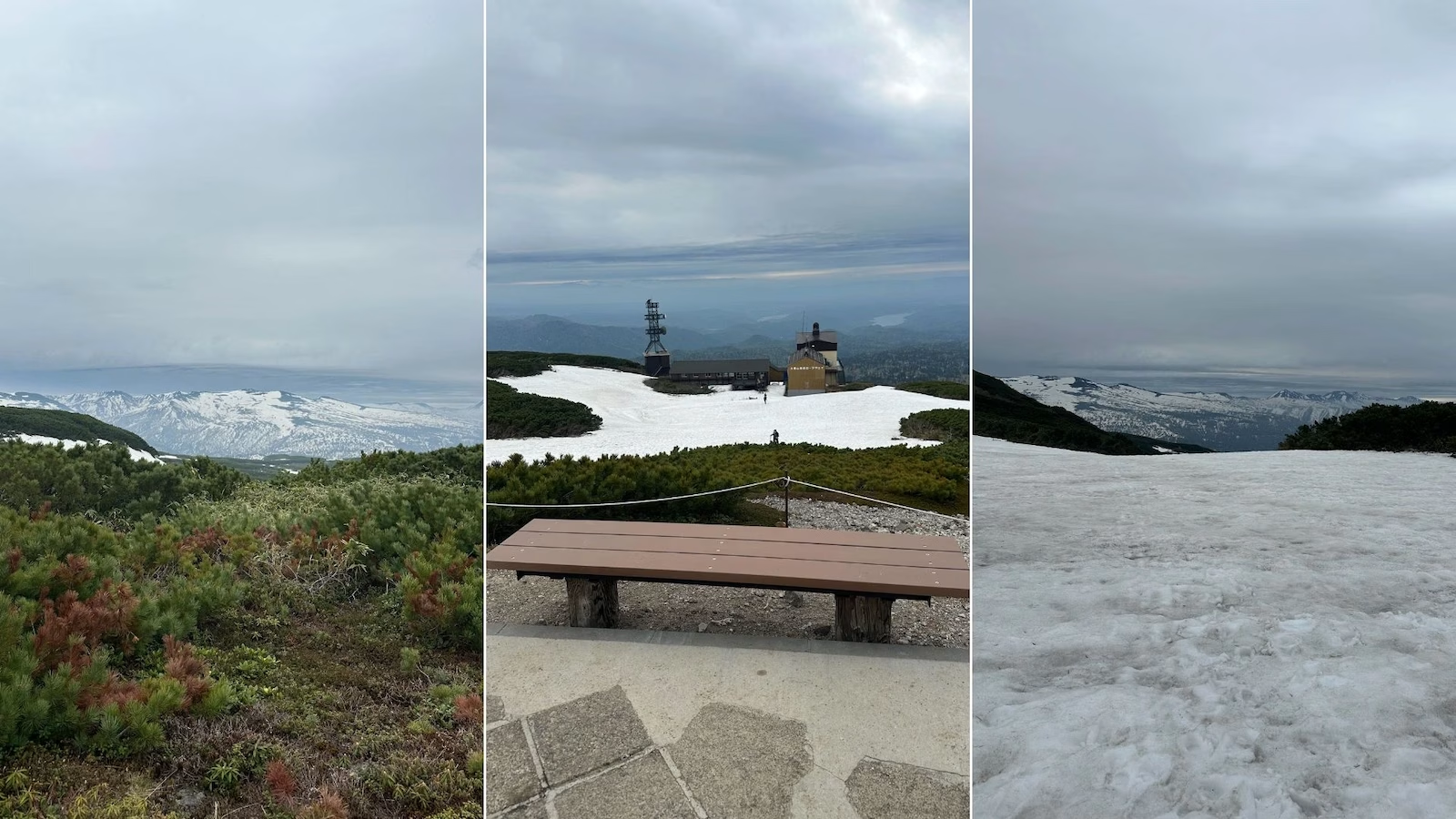
From Sugatami Station, you have a few options for exploring the summit area, catering to different fitness levels and time allowances. For a half-day trip, the most popular and recommended option is the Sugatami-no-ike Pond circular trail.
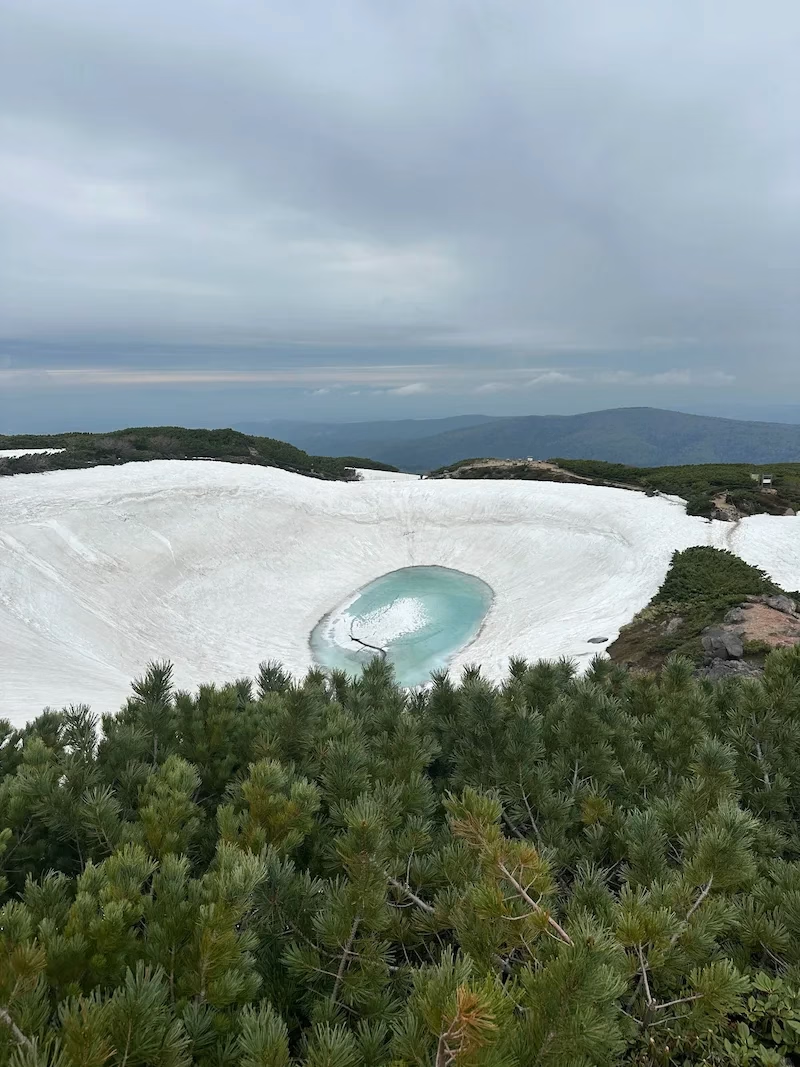
This relatively easy loop takes approximately 60-90 minutes at a leisurely pace, allowing plenty of time for photos and soaking in the scenery. This is the path I took, and it was perfect for the half-day excursion.
Along this trail, you’ll encounter several observation decks offering panoramic views of the Daisetsuzan range and the volcanic landscape. The highlight of this loop is Sugatami-no-ike Pond, a stunning mirror-like pond that reflects the peak of Asahidake on clear days.
Even in June, with snow still covering parts of the landscape, the pond was partially thawed, creating an ethereal scene. This area is truly magnificent and was surprisingly not crowded, allowing for peaceful contemplation.
As I rounded a bend on the loop, I was captivated by the sight of steam vents billowing from the active volcano. It’s a powerful reminder of the raw geological forces at play beneath your feet.
Seeing these fumaroles up close, smelling the sulfur, and feeling the heat from the earth is an incredibly humbling and unique experience that you won’t find just anywhere. The juxtaposition of snow and volcanic activity was mesmerizing.

For those with more time or seeking a more challenging trek, there are longer hikes that lead closer to the actual peak of Asahidake (beyond the Sugatami loop) or even across to other peaks within Daisetsuzan. However, for a half-day trip, sticking to the Sugatami loop is the most practical and rewarding choice. It delivers all the key highlights without pushing your time limits.
Understanding the Mountain Environment
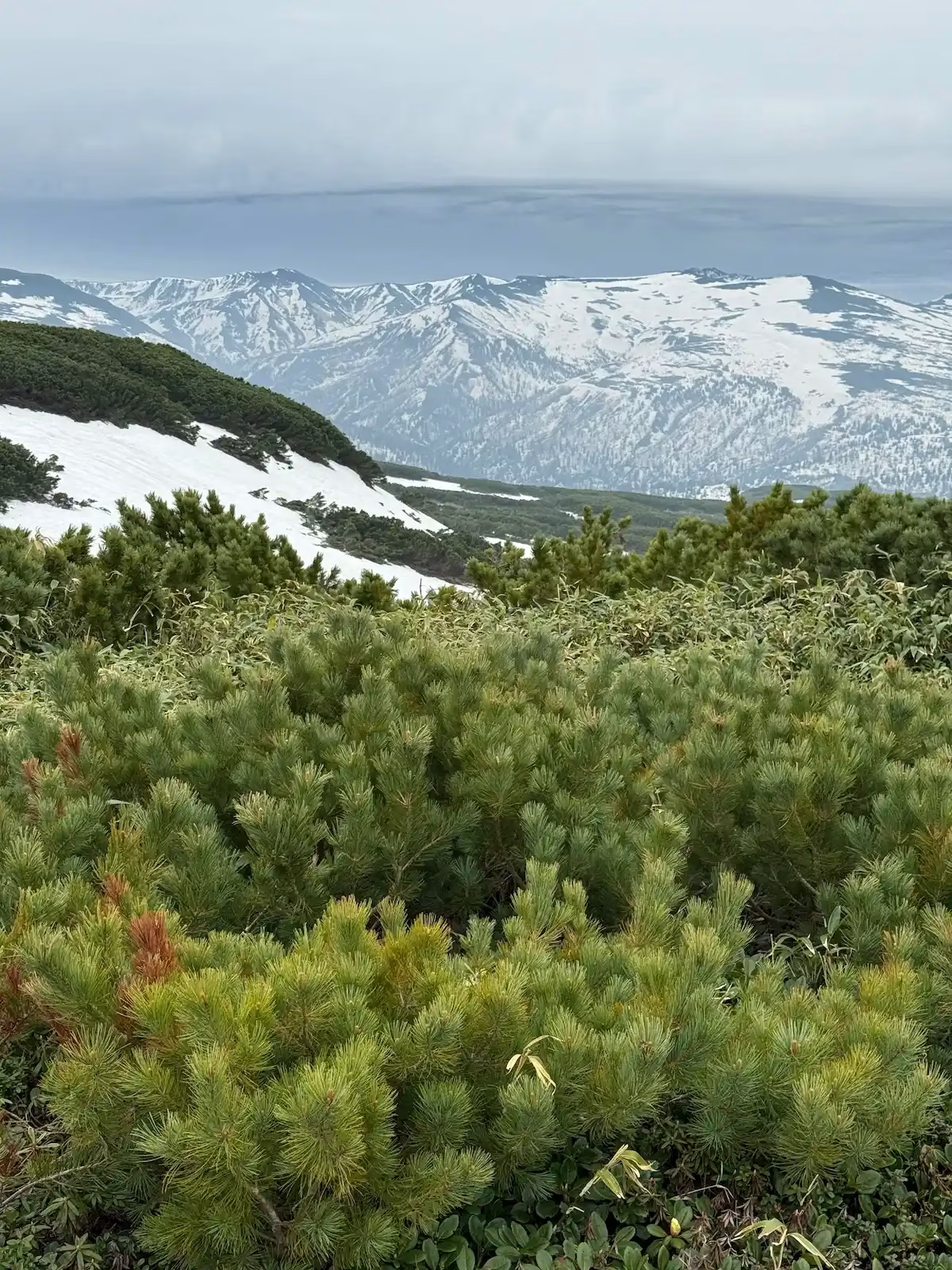
Given that Asahidake is an active volcano within a national park, certain safety protocols are paramount. Always stay on marked trails; venturing off path can be dangerous due to unstable ground, hidden steam vents, or fragile ecosystems. Heed all warning signs, especially those related to volcanic gases or temporary trail closures.
The park rangers at Sugatami Station are a fantastic resource, so don’t hesitate to ask questions.
Wildlife is also present in Daisetsuzan National Park. While rare, encountering brown bears (higuma) is a possibility. Carry a bear bell if you plan extended hikes, and familiarize yourself with bear encounter protocols, though for the Sugatami loop, this is less of a concern due to the higher foot traffic. The biggest “wildlife” you’ll likely encounter are friendly squirrels and various alpine birds.
Before you even leave your accommodation, always check the latest weather forecast for Asahidake. Use reputable sources like the Japan Meteorological Agency (JMA).
Mountain weather can change drastically from hour to hour, impacting visibility and trail conditions. A sunny morning can quickly turn into a cloudy, misty, or rainy afternoon.
Maximizing Your Half-Day and Beyond
To truly get the most out of your half-day Asahidake adventure, consider these refined tips that go beyond the basics.
Beat the Crowds
For a half-day visit, arriving at the Ropeway station shortly after it opens (typically around 8 AM or 8:30 AM, depending on the season) is your best bet. This allows you to ascend before the majority of tour buses and later-arriving visitors, giving you a more tranquil experience on the trails and avoiding queues for the cable car.
The light in the morning is also often softer and clearer for photography. If an early start isn’t feasible, visiting in the late afternoon (allowing enough time before the last cable car down) can also offer fewer crowds, but be mindful of potentially less favorable light and colder temperatures.
Fueling Your Adventure: Food and Facilities
While there are basic facilities at both the Ropeway base station and Sugatami Station (restrooms, small gift shops), food options are limited. The base station usually has a small restaurant or cafe, and Sugatami Station might offer instant noodles or simple snacks. For a half-day trip, I recommend packing your own water and a few energy-boosting snacks. This saves time and ensures you have exactly what you need when you need it. There’s nothing worse than being hungry or thirsty mid-hike.
Alternatively, plan to have a hearty meal before you leave for Asahidake and a well-deserved one when you return to your base town, perhaps exploring some local authentic street food markets if you’re passing through a city like Asahikawa.
Adapting to the Unexpected
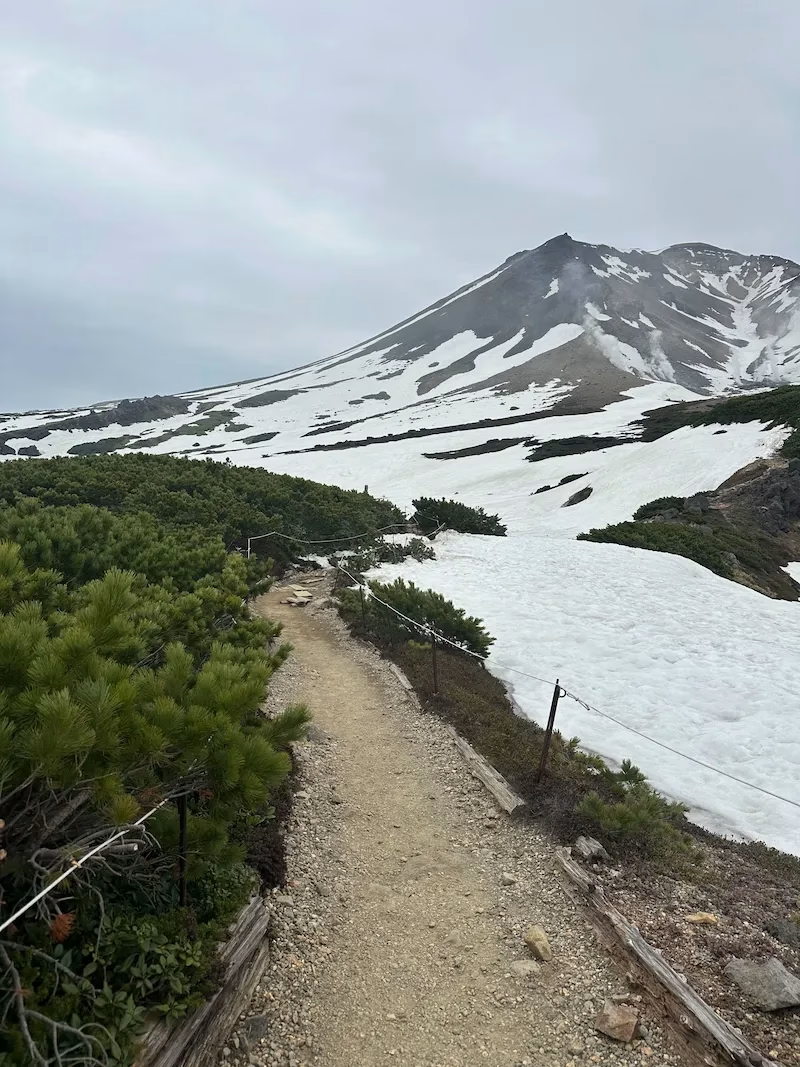
What if the weather turns completely sour? While a half-day trip is designed for efficiency, sometimes Mother Nature has other plans. If visibility is zero or a storm rolls in, don’t force it. The beauty of Daisetsuzan is its surrounding natural areas. Consider alternative, lower-altitude activities nearby if the mountain is completely socked in.
Perhaps a visit to the Asahidake Onsen village at the base for a relaxing dip in a hot spring (a quintessential Hokkaido experience!), or exploring a local craft brewery in Asahikawa. Having a backup plan helps manage expectations and ensures your day isn’t wasted. Embracing the unexpected is part of the charm of spontaneous travel, and it often leads to discovering hidden gems or moments of profound natural beauty.
My half-day trip to Asahidake was truly a magnificent experience. Despite the lingering snow in June, the clear, invigorating air, the stunning vistas, the active steam vents, and the peaceful loop around Sugatami-no-ike Pond made it feel like an escape into another world. The fact that the loop was not crowded only enhanced this sense of serene discovery.
Final Takeaway
My Asahidake adventure proved that you don’t need days to immerse yourself in Hokkaido’s wild heart. It’s about being smart with your time, preparing for the mountain’s unique conditions, and embracing the journey. The crisp air, the vast volcanic landscape, the surreal steam vents, and the reflective beauty of Sugatami-no-ike Pond all contributed to an experience that felt grander than its duration.
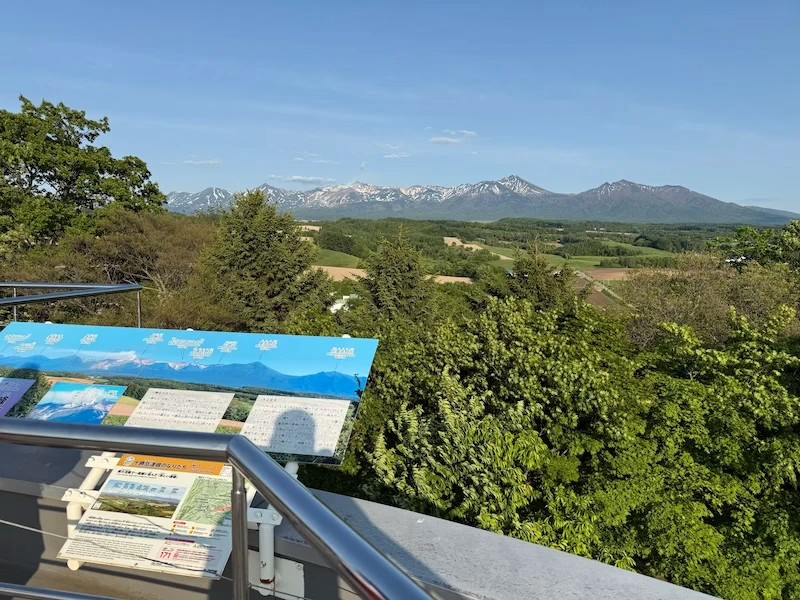
The most impactful tips for your own half-day Hokkaido highlight boil down to three things: meticulous preparation (especially your attire and transportation), a flexible mindset ready to adapt to mountain whims, and an open heart to truly absorb the majestic beauty around you. You are now equipped with the insider knowledge to navigate this incredible destination efficiently, affordably, and safely.
Asahidake isn’t just Hokkaido’s highest peak; it’s an accessible testament to nature’s raw power, waiting to be explored by savvy travelers like you. With this guide, you’re not just visiting; you’re truly experiencing it.




